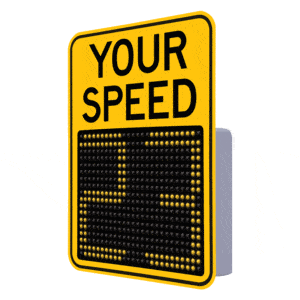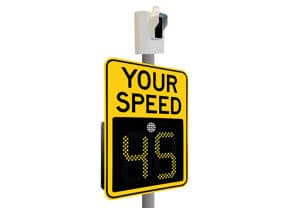Every private community has residents safety as a top priority. But coming up with a concrete plan to make sure that safety isn’t compromised may seem like a challenging task. Speeding cars pose a threat to the wellbeing and safety of all your residents, particularly pedestrians, cyclists, and young children.
This guide aims to provide you with the necessary steps and solutions to develop an effective traffic calming plan that prioritizes safety for your community and establishes safer, more tranquil neighborhoods and streets.
Steps to developing an HOA traffic calming plan:
- Assess community safety needs: Determine the extent of speeding issues in your community. Conduct resident surveys, analyze accident data, and identify areas of concern. Gather detailed feedback from residents and ensure that they are active stakeholders in your safety program.
- Identify when and where speeding occurs: Gather data on specific locations to determine if resident concerns are accurate and when speeding is most prevalent. Tools like Speed Tracker from Traffic Logix are an affordable, effective way to gather traffic detailed traffic data and analytics.
- Lead by example: Encourage HOA management and staff to adhere to speed limits, setting an example for residents. The more people that consistently adhere to speed limits, the more likely it is that others will follow suit.
- Communicate with neighbors: Engage with residents to understand their concerns and garner support for traffic calming initiatives. Hold community meetings, distribute surveys, and create online forums to encourage open communication.
- Collaborate with other local HOAs: Explore partnerships with neighboring communities facing similar challenges. Sharing experiences, resources, and best practices can lead to more effective traffic calming strategies. Adapt strategies that best align with your community’s needs.
- Research options: Explore different traffic calming tools and solutions, staying aware that there is no one solution that fits every problem or circumstance. Consider a variety of solutions including educational campaigns, physical solutions such as speed humps, and interactive solutions such as radar speed signs and speed cameras.
- Be proactive: Work to implement traffic calming solutions prior to significant issues occurring that necessitate their installation. Ensure that your community remains safe rather than confronting challenges once accidents occur. Identify vulnerable areas and ensure that they are safe for residents of all ages.
- Monitor effectiveness: Evaluate and adjust your traffic calming measures using analytics and performance reports. Share successes with your board and residents to encourage further compliance. Adjust measures as needed using data to guide you to successful traffic calming.










